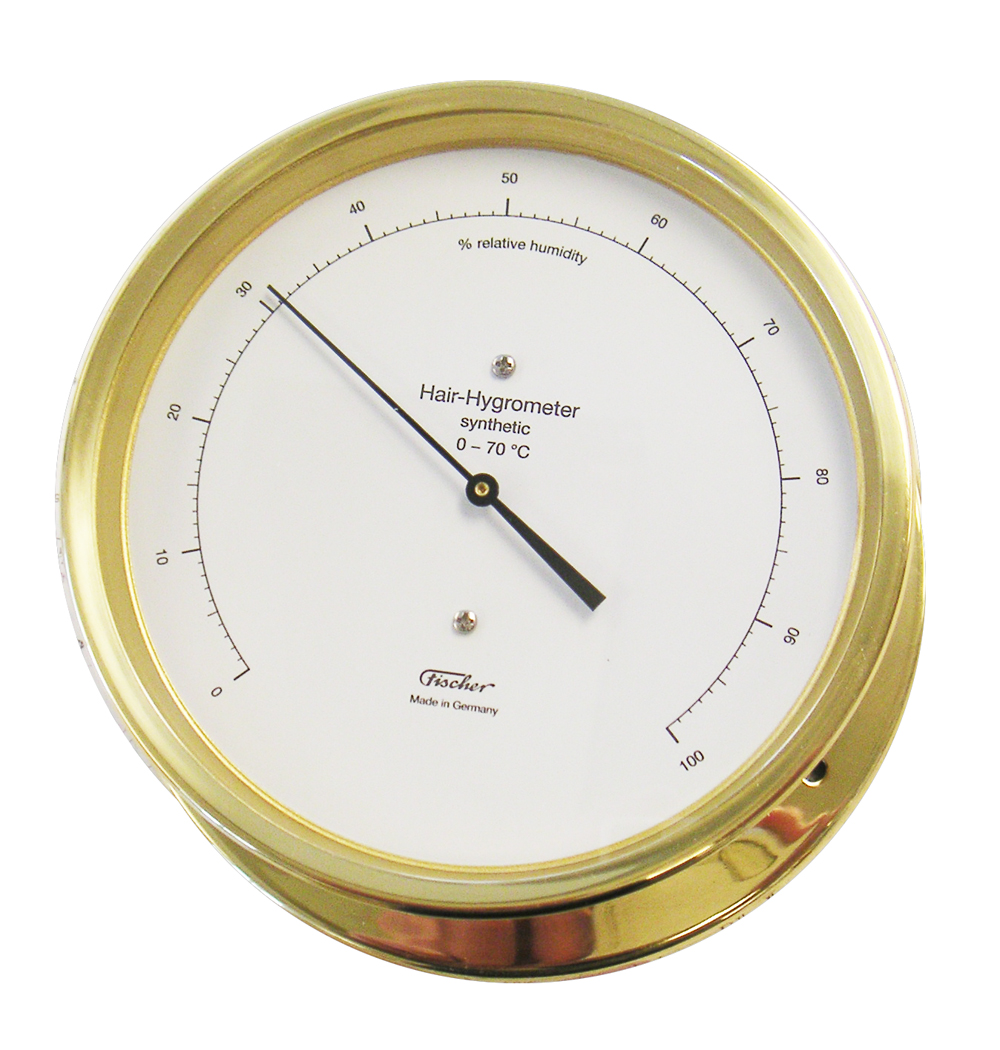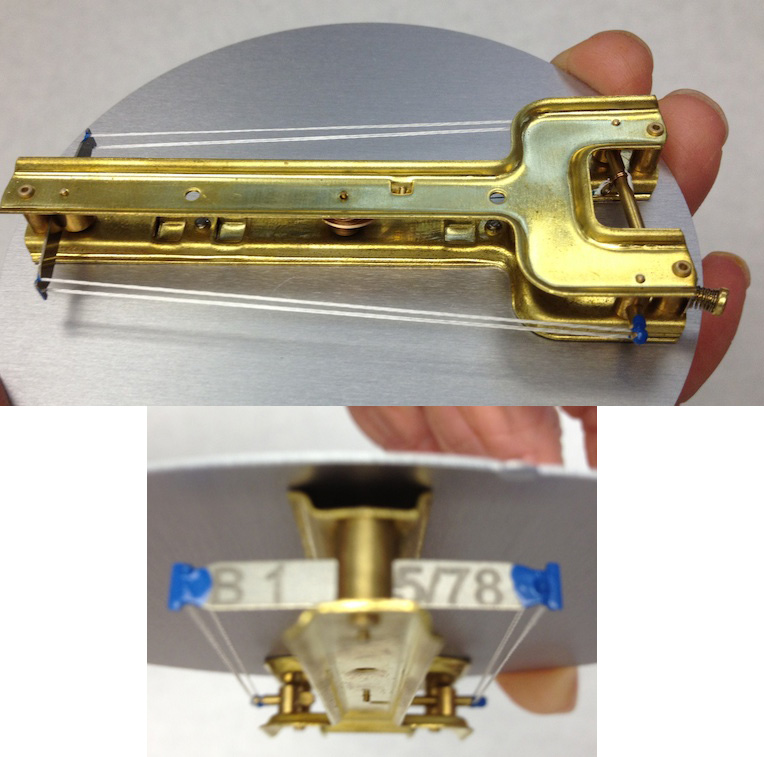Views: 1466
Replies to This Discussion
-
Oh no you don't Mac.... ;) The last time I opened up anything that I actually liked and that worked I never liked it again because it never worked again....;)
Great question though... now if we can find the right sort to wreck their Abbeon Bob's out uncle... ;)
PS: My Abbeon does not require opening it up to calibrate and I check/calibrate it twice a year and find some minimal drift when I do.
-
ever the contrarian, whilst i do not in any way wish to deny that awareness of the importance of rh in the long term is vital to the stability of our instruments, i think we can beome too anal in our fixation on exact measurement.
yes, i do have a psychrometer and the table to interpret its readings, and i do use them to check the accuracy of the several cheap digital hygrometers i have distributed throughout my shop building. are there variations in the measurements given by the digitals? of course...`
but i also recognize that the readily available technology we use to maintain a semblance of stable rh in our shops is only capable of maintaining rh within a range and not at a specific nominal level.
having been involved with systems in galleries where the system can monitor the effects of a single person moving through the building of 100k+ sq yds on rh, temp,, co2 and make adjustments to compensate, i am far too aware of my inability to afford to do likewise.
and my experience has shown me that it is unnecessary. staying fairly consistenly within the 40 - 50% rh range has served me well.
-
There was an example of this type of hygrometer at Jefferson's Monticello when I toured it ~15 years ago. Antonio Stradivari lived until a few years before Jefferson was born. Jefferson was a weather junkie so who knows where the idea came from. I'm thinking a light weight tied to a suspended piece of horse tail hair was also used as a hygrometer in early times. Shorter equals drier.
-
Hi John!
The best I can tell you is that the water content of the dried wood used on Stradivari Instruments that have undergone testing was reduced from approximately 12 per cent to between 6 to 8 per cent, and at the 50 per cent relative humidity, typical of Cremona's humid climatic conditions.
So in regard to Humidity at least, it would appear that the prevailing climatic conditions for Stradivari from what has been able to be determined by Scientific Analysis, would place them an absolutely ideal position for an Instrument Makers point of view.
My understanding is that the fine people at Martin (big heads up and thank you for superb information and service from Darren at Martin Customer Service yesterday) get their woods water content down to an average figure after initial seasoning, then to approximately 14 per cent after kilning and finally re-seasoning them, to achieve approximately 6 per cent.
So Stradivarius Instruments that have undergone testing would seem to have been made in the same ball park as Martins controlled conditions, at least regarding Humidity.
Absolutely Ideal in fact for Guitar Building if you judge the ideal Relative Humidity Range to be 45% to 55%.
In the City of my Birth, there resides the oldest museum in all of Western Civilisation.
They have some rare Stradivari Instruments and certainly the most Highly Valued and Expensive Instrument in the World.
There is a Stradivari Guitar here, which although there are others that exist elsewhere around the world, some have been very, very heavily repaired, whilst this example is in fine condition, plus there's the only Stradivari Harp in existence.
Next month they will begin display a collection of 20 Stradivari Violin Family Instruments, (I thought it was 22 in all, but I keep hearing different figures) anyway, the largest collection of Stradivari's ever seen in the U.K. Many have never before been on Public Display.
And there's a Concert featuring them in the famous Sheldonian Theatre where as well in Ensemble, they can be heard singly utilising unaccompanied music by Bach and Paganini on a number of Stradivarius violins, and expert discussion of the unique qualities of the instruments.
http://www.musicatoxford.com/Concerts/Events1213/Strad.html
"The Ashmolean Museum in Oxford, UK, is to hold a major Stradivari exhibition this summer.
'Stradivarius', which runs from 13 June to 11 August, will feature 21 Stradivaris drawn from international and private collections, London's Royal Academy of Music and the Ashmolean's own collection.
The exhibition has been curated by Jon Whiteley, the Ashmolean's senior curator of European art, in collaboration with Charles Beare, who has stated that the instruments on show will be 'the very finest and best-preserved examples'.
The Ashmolean is famously home to the 1716 'Messiah' Stradivari, and also counts the 1683 'Cipriani Potter' (pictured) in its collection.Visitors to the exhibition can also expect to see the 'Viotti' violin of 1709 and the 'Batta-Piatigorsky' cello of 1714. A full list of the instruments being displayed can be viewed below.
The exhibition will feature a display of Stradivari's tools, models and patterns, on loan from the Stradivari Museum in Cremona. Luthier workshops, expert tours and a series of performances will take place during the run of the exhibition.James Ehnes begins the events programme with a solo recital on 14 June at Oxford's Sheldonian Theatre, where he'll play Bach and Paganini on a number of Stradivari violins.
The full list of Stradivari instruments on display is:1666 violin
1683 ‘Cipriani Potter’ violin
1688 ‘Hill’ guitar
1694 ‘Benecke’ violin
1696 ‘Archinto’ viola
1698 ‘Baron Knoop’ violin
1700 ‘Cristiani’ cello
1700-1710 mandolin
1709 ‘Viotti’ violin
1709 ‘La pucelle’ violin
1711 ‘Parke’ violin
1712 ‘Fountaine’ violin
1715 ‘Boissier’ violin
1713 ‘Bass of Spain’ cello
1714 ‘Batta–Piatigorsky’ cello
1715 ‘Alard’ violin
1716 ‘Messiah’ violin
1717 Tyrrell violin
1721 ‘Lady Blunt’
1733 ‘Kreisler’ violin
c.1734 ‘Habeneck’ violin"Just in case you missed it...
"The exhibition will feature a display of Stradivari's Tools.
Models and Patterns, on loan from the Stradivari Museum in Cremona.
Luthier workshops, expert tours and a series of performances will take place during the run of the exhibition."
http://www.ashmolean.org/exhibitions/stradivarius/
http://www.ashmolean.org/exhibitions/stradivarius/video/
There are historical hydrometers of great interest, and I thank you, for this thread, and the important and interesting topic.
But personally, I greatly doubt that Stradivarius himself.
Would have had very much use for them.
For the reasons given above.
P
-
It was a rhetorical question. But I do envy your opportunity to see these things.
John
-
Hi John! For sure I understand.
However, your fine thread provided a perfect opportunity for me to share the details of the exhibition, which I felt some people, may well want to attend. Particularly those close by in the U.K. and in Continental Europe for whom it is relatively easy.
However it is true to say that "The Messiah" alone attracts quite tremendously large numbers of clever Academic Professors and Musical Instrument Experts from all over the U.S.A. every year. Even without the exhibition and all the additional Instruments.
Because "The Messiah" is known to never have been played in performance, ever, and it is the only Stradivarius Instrument anywhere, that has never needed to be repaired or modified in any way, it's therefore a kind of Time Capsule that people use to learn all they can from as a Point of Reference. Although, its true to write it is in many respects, it's quite different to most of his other Instruments in various ways.
All told, it seems it will be quite an event. I understand Experts on Stradivarius Instruments will be in attendance and actually making Instruments in the Exhibition, revealing many aspects regarding how things were done by the great Master.
The main thing for me personally, was that I have such tremendous respect for Frank Ford and the fine Luthier's that make up the outstanding body of his colleagues and friends, that I wanted to share this, at this time, just in case it might be of interest.
Forums are useful in that way. Your thread on Humidity simply gave me the opening.
Thank you for your graciousness.
Best Wishes
P
- ‹ Previous
- 1
- 2
- Next ›
© 2025 Created by Frank Ford.
Powered by
![]()

